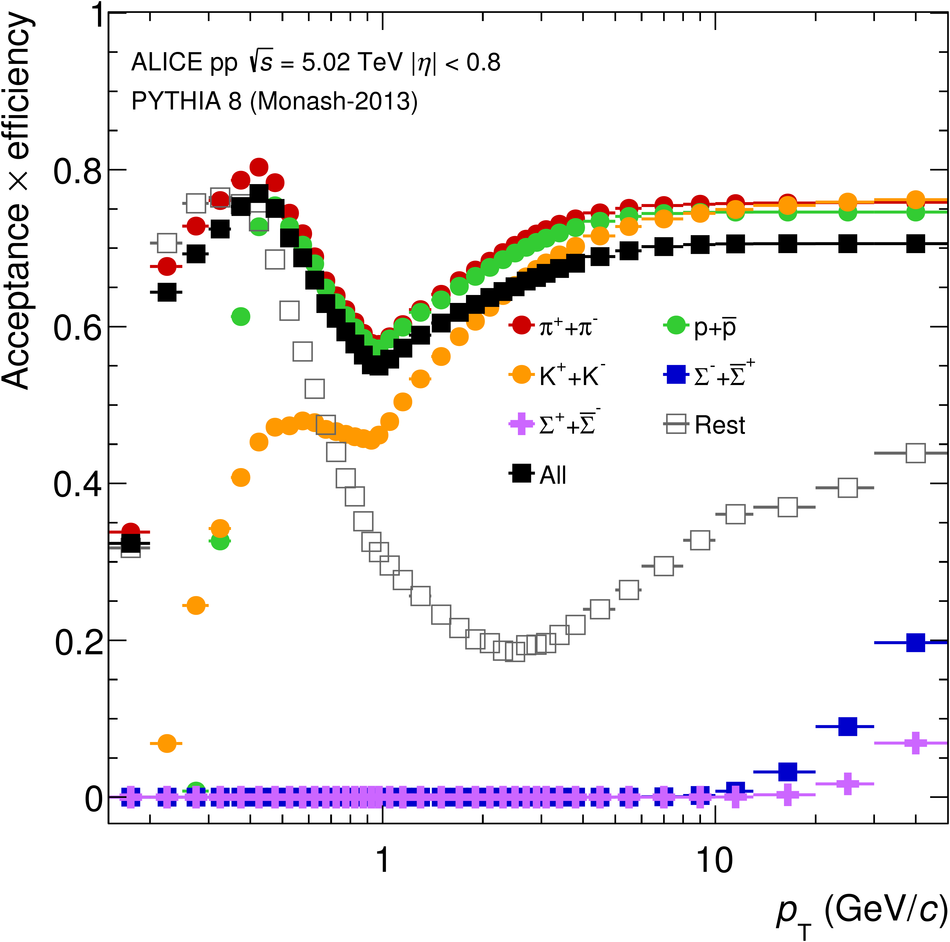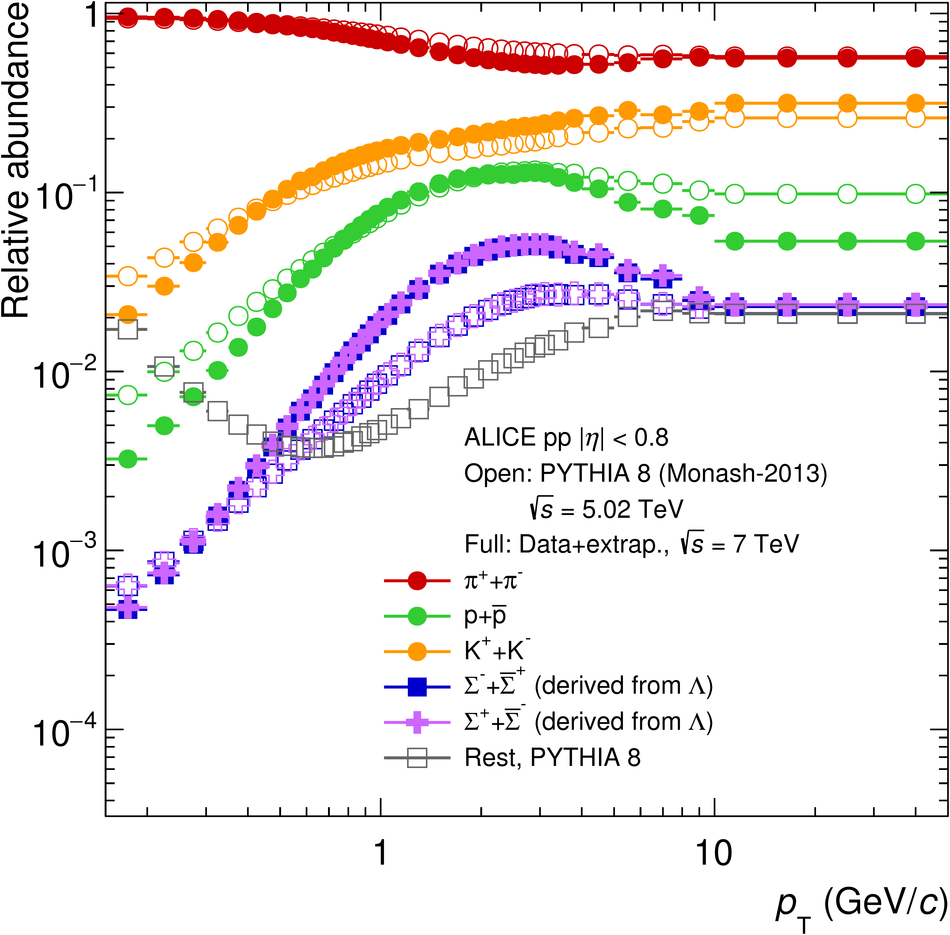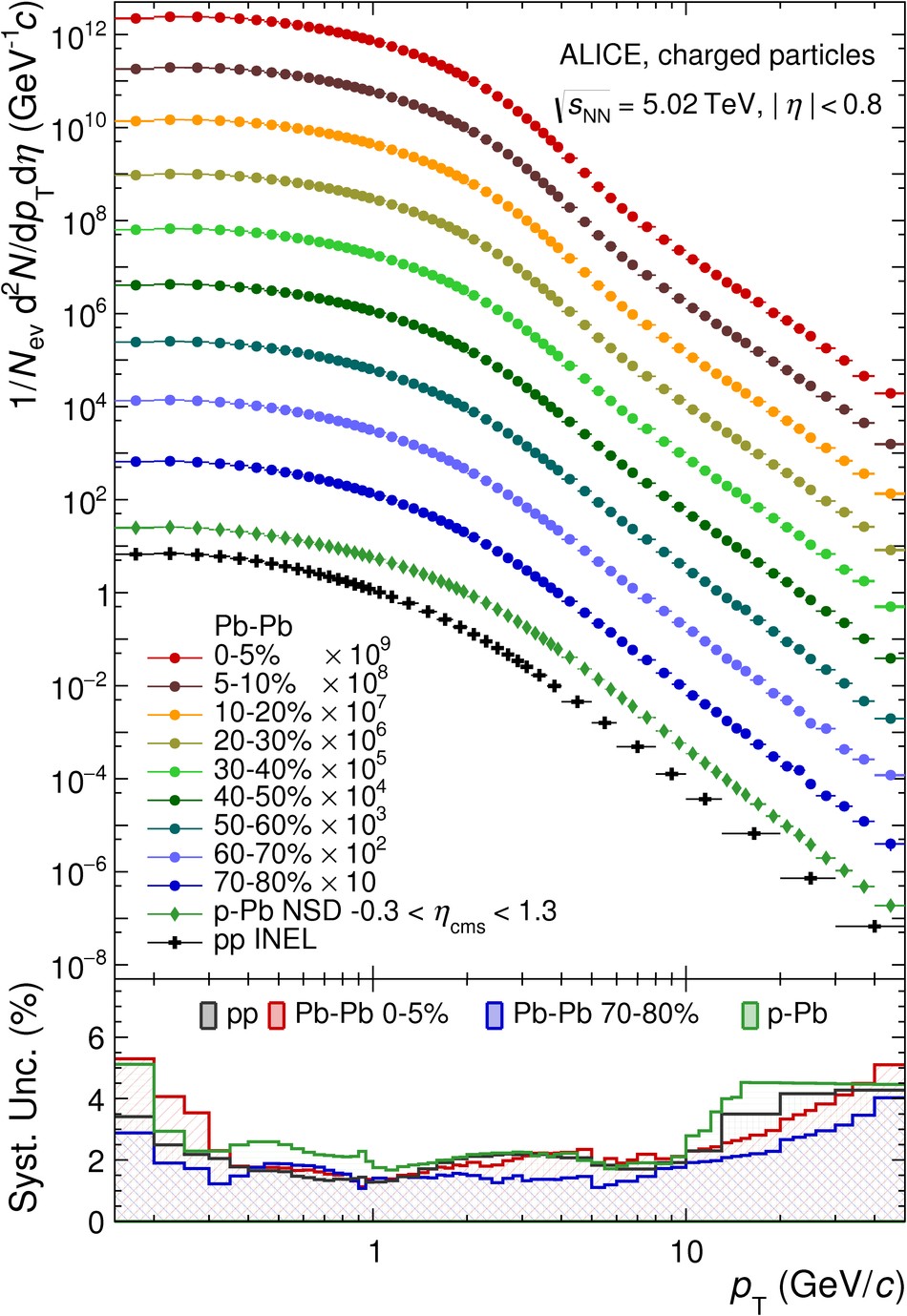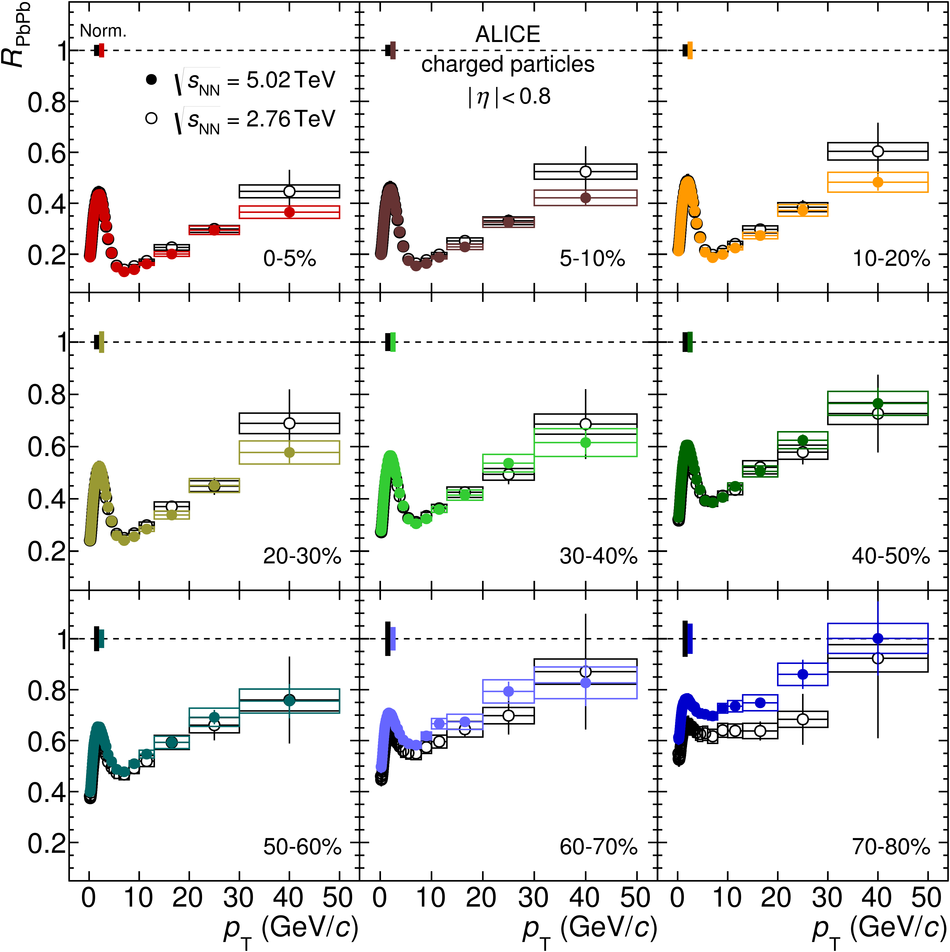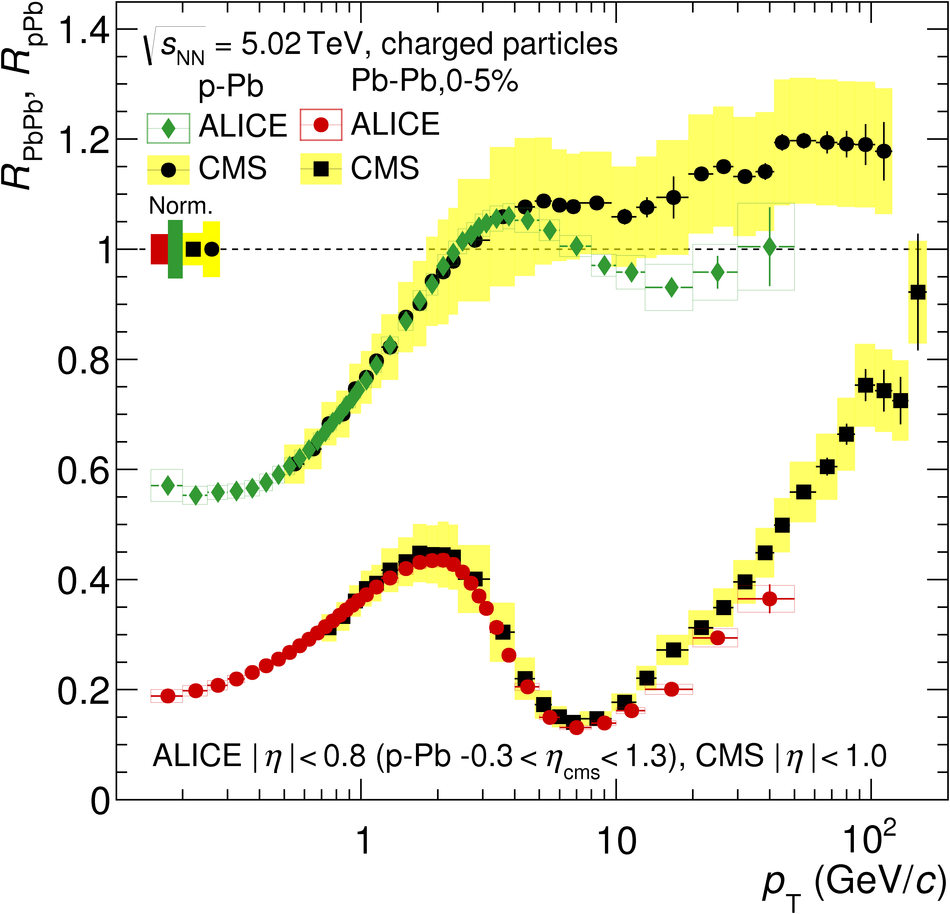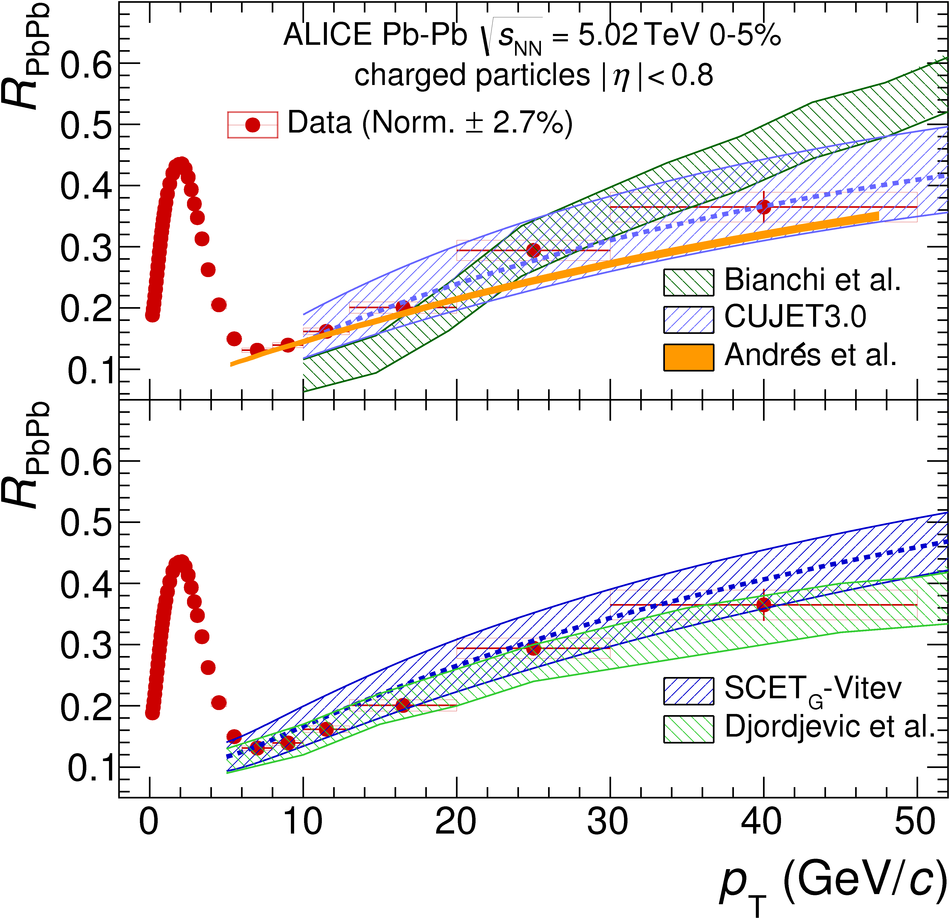We report the measured transverse momentum ($p_{\rm T}$) spectra of primary charged particles from pp, p-Pb and Pb-Pb collisions at a center-of-mass energy $\sqrt{s_{\rm NN}} = 5.02$ TeV in the kinematic range of $0.15<~p_{\rm T}<~50$ GeV/$c$ and $|\eta|<~ 0.8$. A significant improvement of systematic uncertainties motivated the reanalysis of data in pp and Pb-Pb collisions at $\sqrt{s_{\rm NN}} = 2.76$ TeV, as well as in p-Pb collisions at $\sqrt{s_{\rm NN}} = 5.02$ TeV, which is also presented. Spectra from Pb-Pb collisions are presented in nine centrality intervals and are compared to a reference spectrum from pp collisions scaled by the number of binary nucleon-nucleon collisions. For central collisions, the $p_{\rm T}$ spectra are suppressed by more than a factor of 7 around 6-7 GeV/$c$ with a significant reduction in suppression towards higher momenta up to 30 GeV/$c$. The nuclear modification factor $R_{\rm pPb}$, constructed from the pp and p-Pb spectra measured at the same collision energy, is consistent with unity above 8 GeV/$c$. While the spectra in both pp and Pb-Pb collisions are substantially harder at $\sqrt{s_{\rm NN}} = 5.02$ TeV compared to 2.76 TeV, the nuclear modification factors show no significant collision energy dependence. The obtained results should provide further constraints on the parton energy loss calculations to determine the transport properties of the hot and dense QCD matter.
JHEP 1811 (2018) 013
HEP Data
e-Print: arXiv:1802.09145 | PDF | inSPIRE
CERN-EP-2018-025

